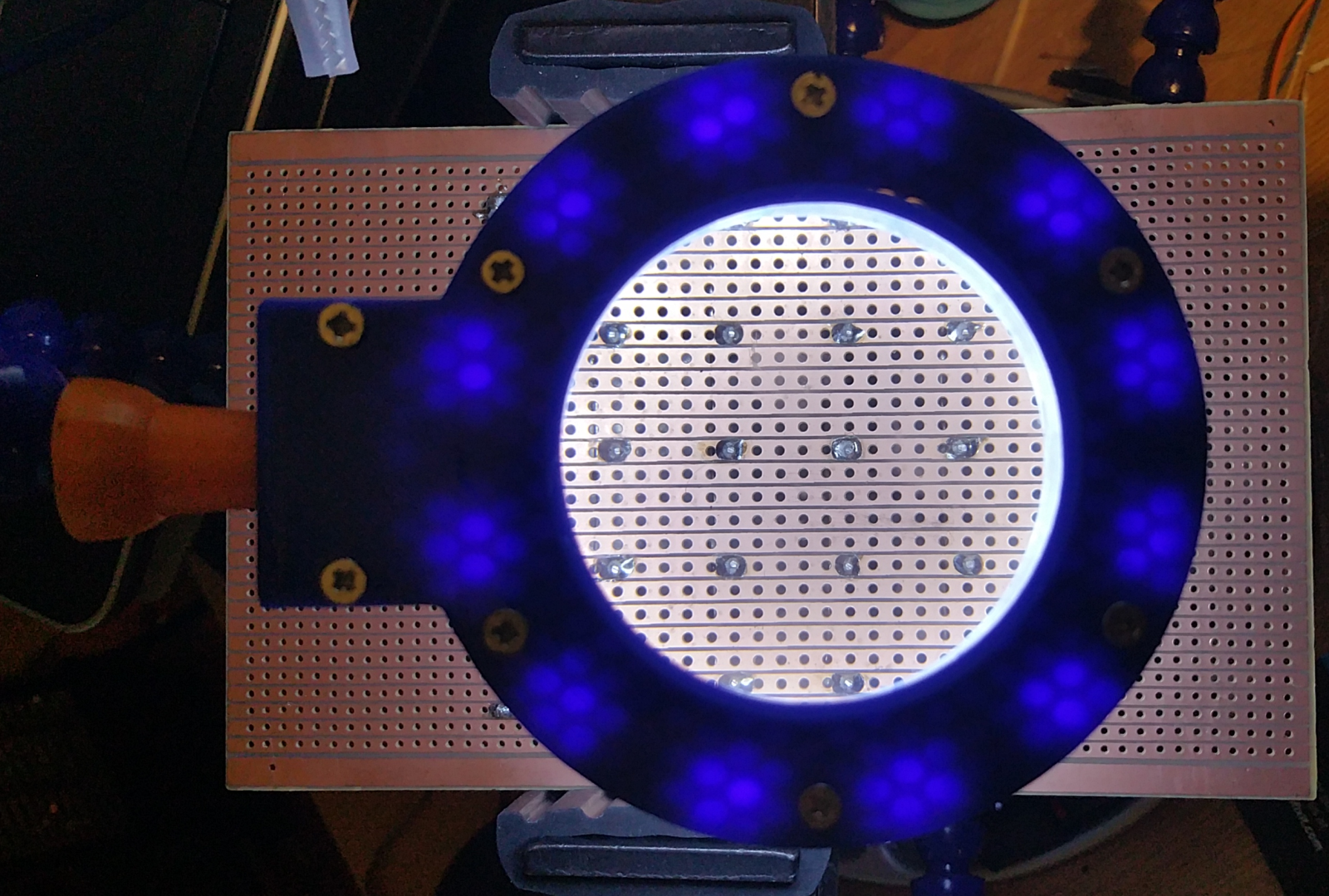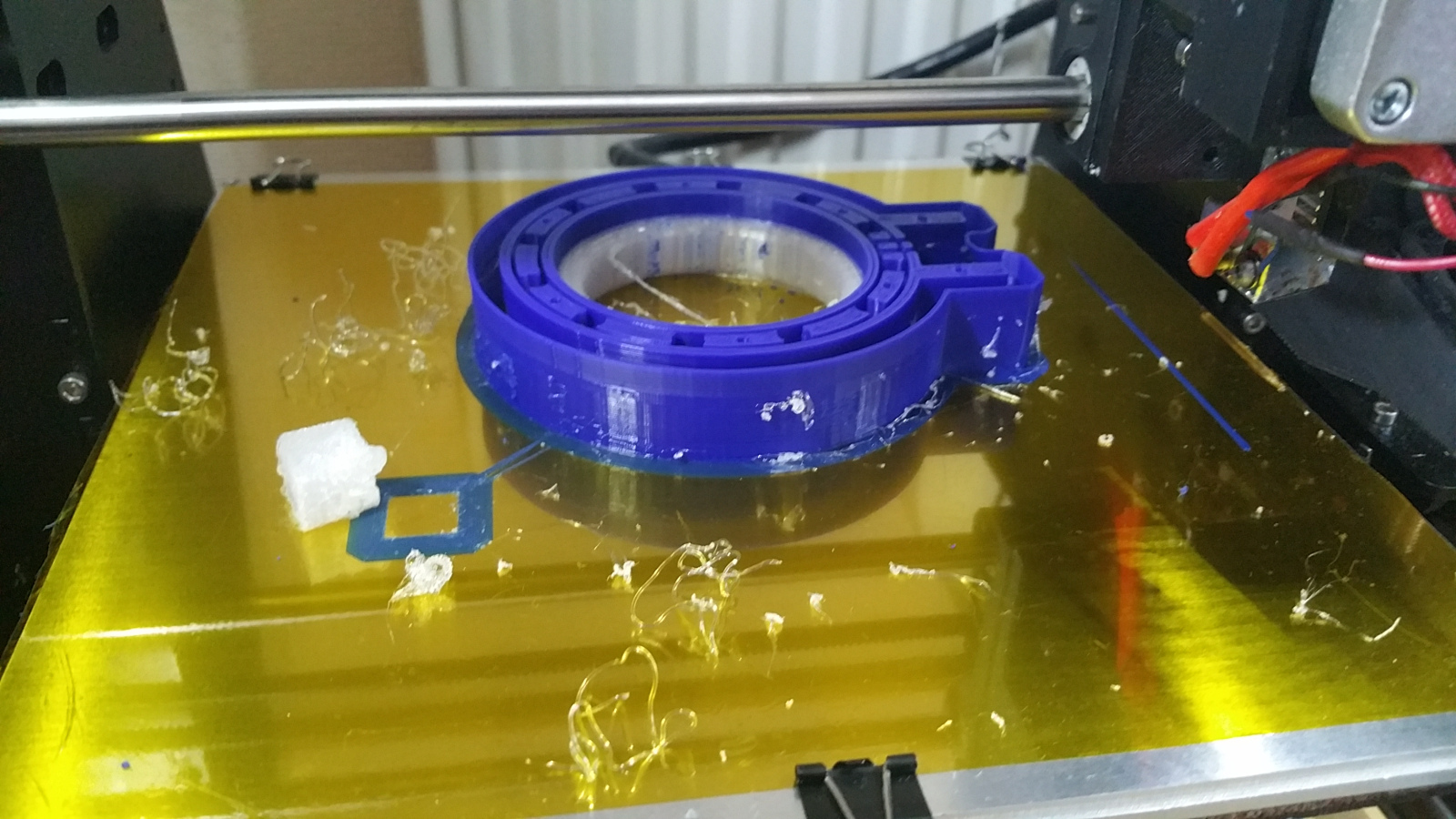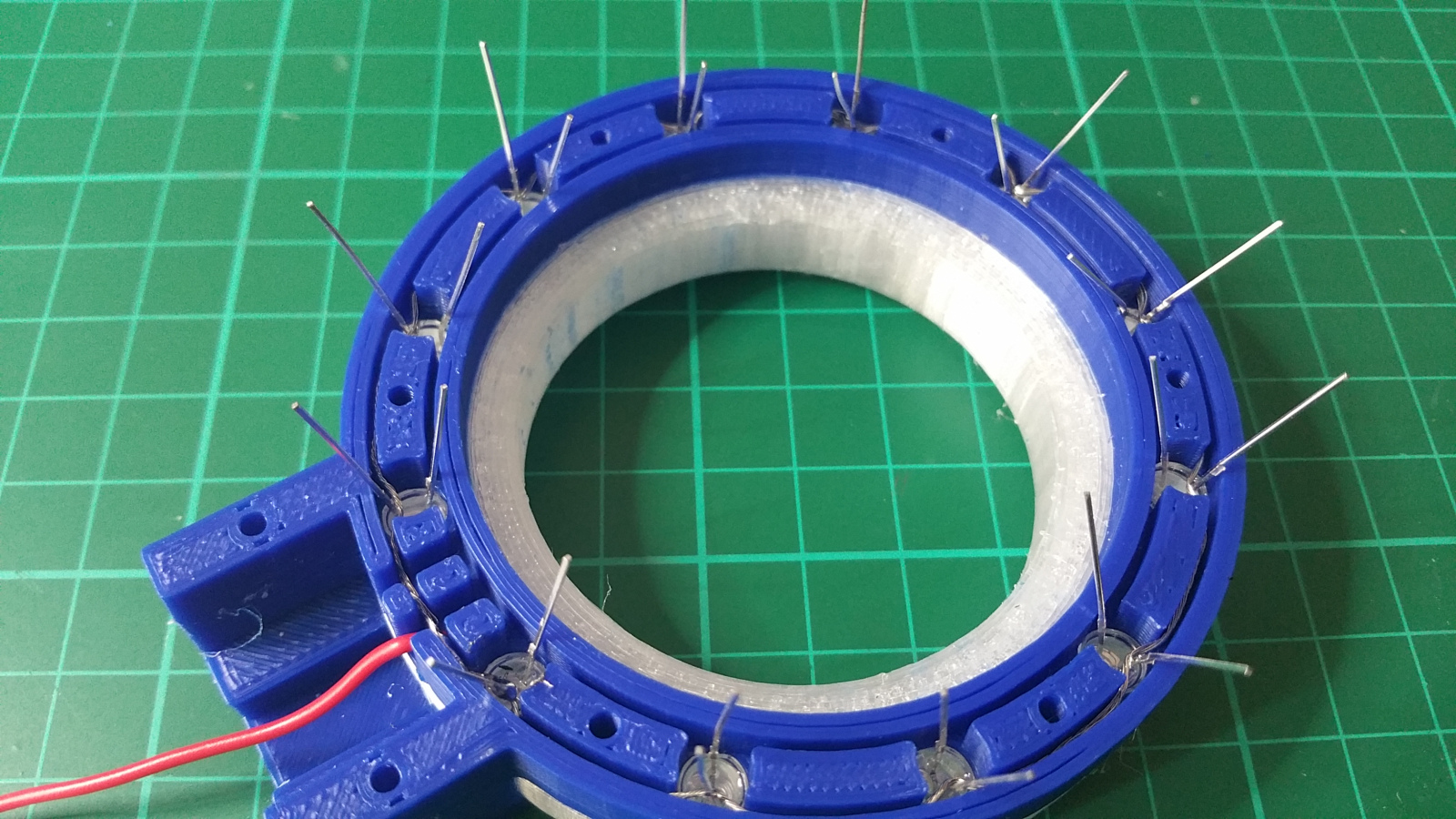
This week’s selection is the 3D Printed Illuminated Magnifying Glass by Anil Mahtani of The C Continuum.
In fact, an illuminated magnifying glass would be an excellent addition to anyone’s 3D printing workshop, along with several other tools. With Mahtani’s design, you can make one yourself for almost no cost.
The primary structure of the magnifier is several layers of circular shapes that hold the embedded LED lights. Yes, this project involves more than just 3D printing – it’s a real, functioning illuminated magnifying glass. You’ll need to wire up the LEDs and provide the actual magnifying glass as well as 3D printing the structural components. Here’s the parts manifest:
- Helping hands or 60mm magnifying glass
- 12 White LEDs
- 2mm x 8mm, Self-Tapping Wood Screws
- Taulman T-Glase Clear
- PrimaValue Blue PLA
- Hobby Creek Universal Holder Arm
- μUSB Breakout Board
- 27Ω resistor

The STL files for the 3D printed components are provided for free download by Mahtani, who designed them in Onshape, one of my favorite 3D design tools.
I find this project fascinating because it is a very challenging project to 3D print. While the wiring, installation of magnifying glass and overall assembly is straightforward, 3D printing the transparent LED cover is tricky.

Why so tricky? The LED cover must be relatively transparent, and for that Mahtani recommends using Taulman T-Glase clear filament. This stuff is always tricky to print, as it is challenging to make it reliably stick to the print surface, likes to ooze and in this project it can be printed alongside with PLA plastic. Oh, and the transparency property itself is difficult: a precise temperature is required to ensure maximum clarity, and an optimum extrusion thickness is required to properly diffuse the light from the LEDs. I get the impression you’ll be printing a few iterations of this before you get it right.

But if you do, you end up with an amazing, self-built illuminated magnifying glass, something everyone should own.
Via The C Continuum

